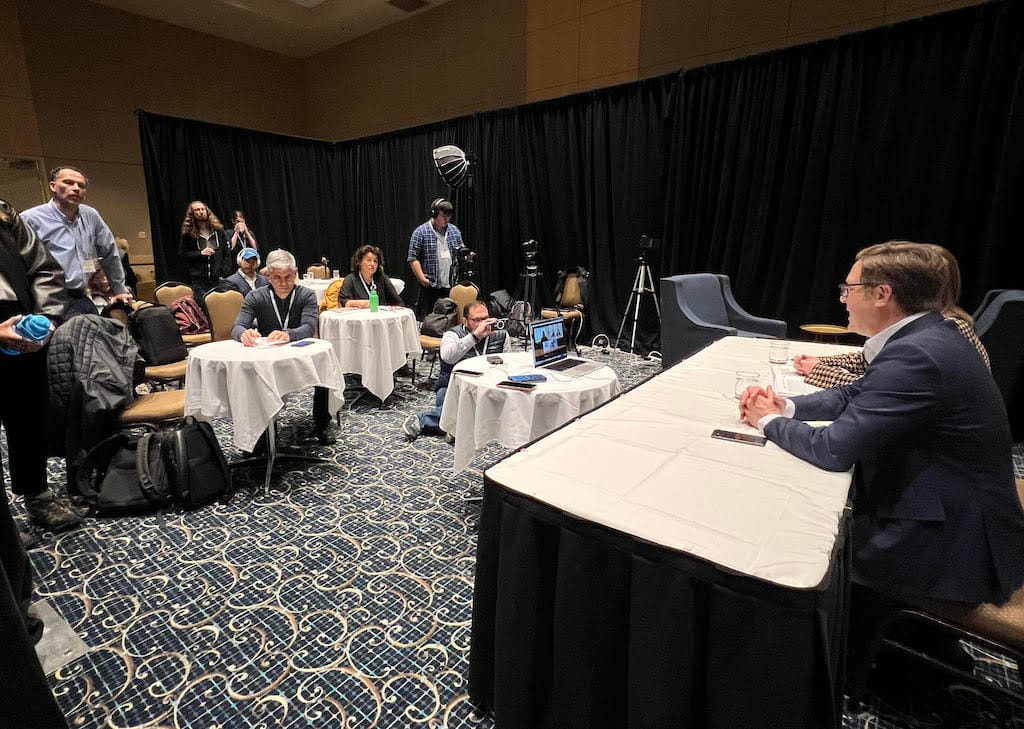Broadband Notice of Funding Availability Seeks to Balance Requirements with Flexibility
Alan Davidson says NOFO requires that grant recipients offer both low-cost service options and middle-class affordability plans.
Jericho Casper

KEYSTONE, Colorado, May 24, 2022 – The National Telecommunications and Information Administration is attempting to balance stakeholder demands to ensure new entrants to the broadband marketplace, while making certain the agency is a good shepherd of the federal funds, the administrator of the U.S. Department of Commerce agency said here Tuesday.
Alan Davidson, the assistant secretary of Commerce responsible for the agency that is spending the lion’s share of federal broadband money, said that NTIA will consider affordability to be an important consideration in making awards.
In a discussion with Broadband Breakfast editor and publisher Drew Clark, the pair reviewed the NTIA’s guidelines governing three new broadband grant programs that will see more than $45 billion in federal funding dispersed over the next few years.
Three Notices of Funding Opportunity were released on May 13, 2022. The largest one is for the Broadband Equity, Access, and Deployment program, a $42.5-billion-dollar program aimed at expanding last-mile, high-speed Internet access across the United States.
Davidson referred to the released NOFO as the “starting gun” signaling for states to begin the sprint toward making funding and infrastructure deployment plans to connect local unserved and underserved communities to futureproof Internet connections.

Photo of Alan Davidson at press conference after his remarks at Mountain Connect by Drew Clark
Less than a week since the release of the notices, 25 states and territories have already submitted Letters of Intent to participate in the program, with 35 states and territories stating they intend to submit an initial proposal to access a share of the federal funding by the July 18, 2022, deadline.
Process for states to apply
The NOFO requires that grant recipients offer both low-cost service options and middle-class affordability plans over the resulting infrastructure. The NOFO offers states examples of different affordability plans to model, while also giving states the flexibility to define what can be deemed “affordable” within their borders.
Further, BEAD requires robust stakeholder engagement, and gives preference to grant applicants pursuing public-private partnerships, as well as those which demonstrate they have coordinated with local and Tribal Governments, and community-based organizations, in the creation of their applications.
In an effort to bolster economic development and the creation of new jobs within the United States, the NOFO includes a “Buy America” statute, which requires grant recipients purchase 55% of all network components being used from American manufacturers. During the keynote, Davidson reiterated that the NTIA will prioritize the deployment of fiber infrastructure over other technologies, including cable, DSL, and satellite.
Davidson explained that increased state and federal oversight should be expected to ensure federal broadband funds go to the localities where they are most needed. Oversight requirements are largely spelled out in the statute, but grant recipients can expect more post-award reporting requirements than have been necessitated by previous federal programs.
Davidson’s presentation raised some questions surrounding well-known industry supply chain issues, the shortage of fiber technicians nationally, and the issue of BEAD grant dollars being considered taxable income. Davidson replied to the raised concerns stating that the NTIA is eager to hear about stakeholder’s pain points, and that he predicts there will be an ongoing process of working with states on these issues.










Member discussion